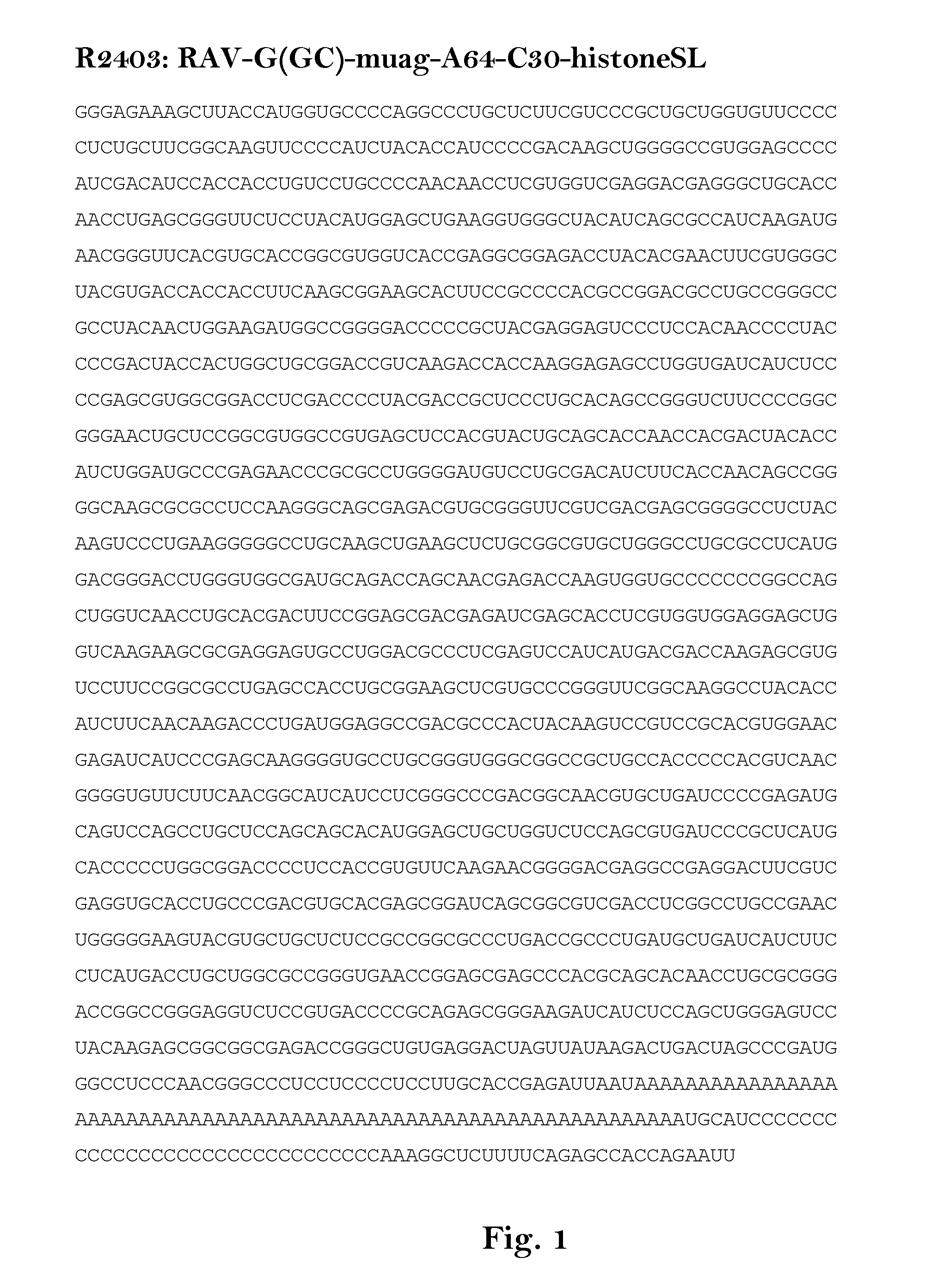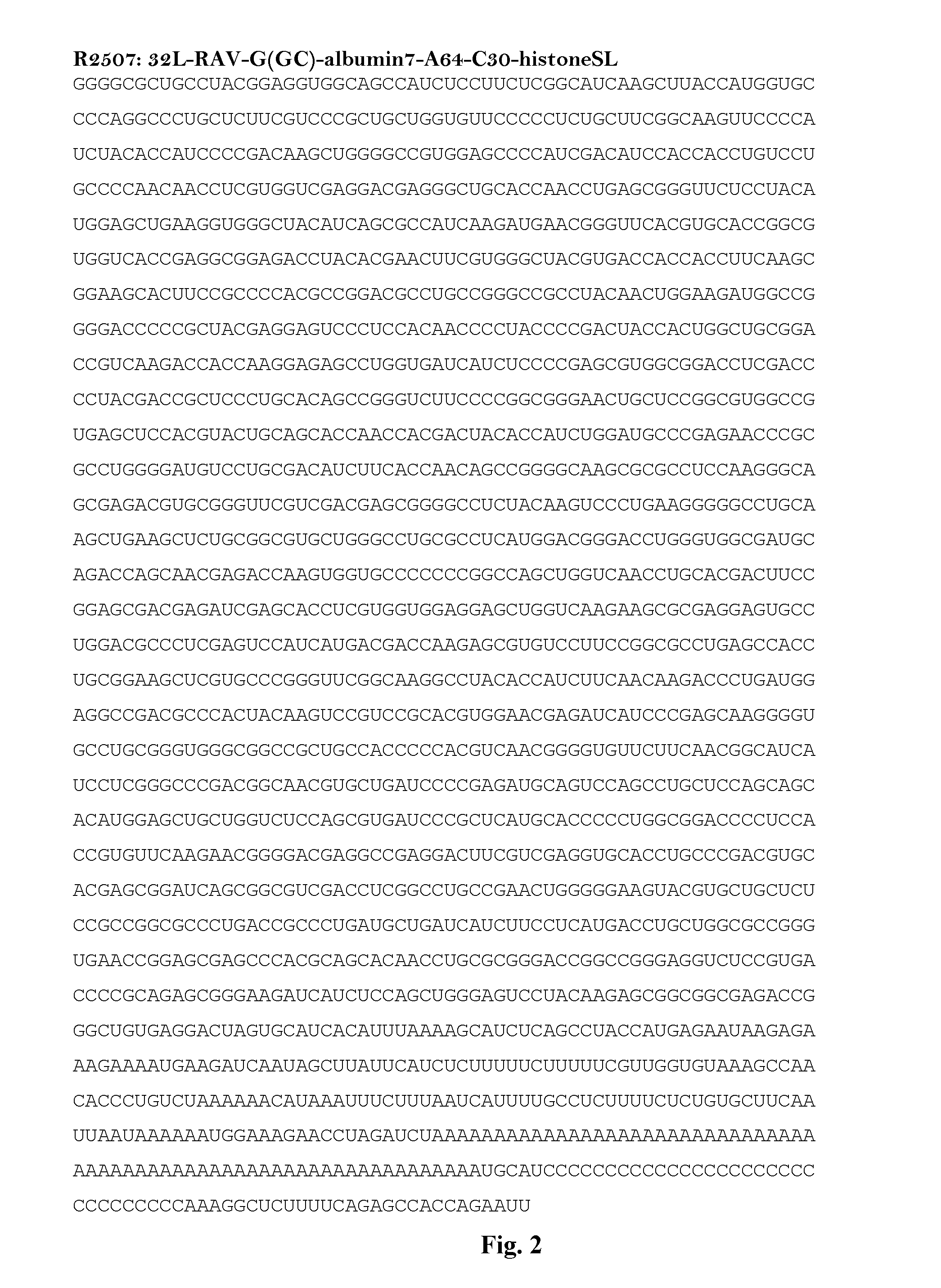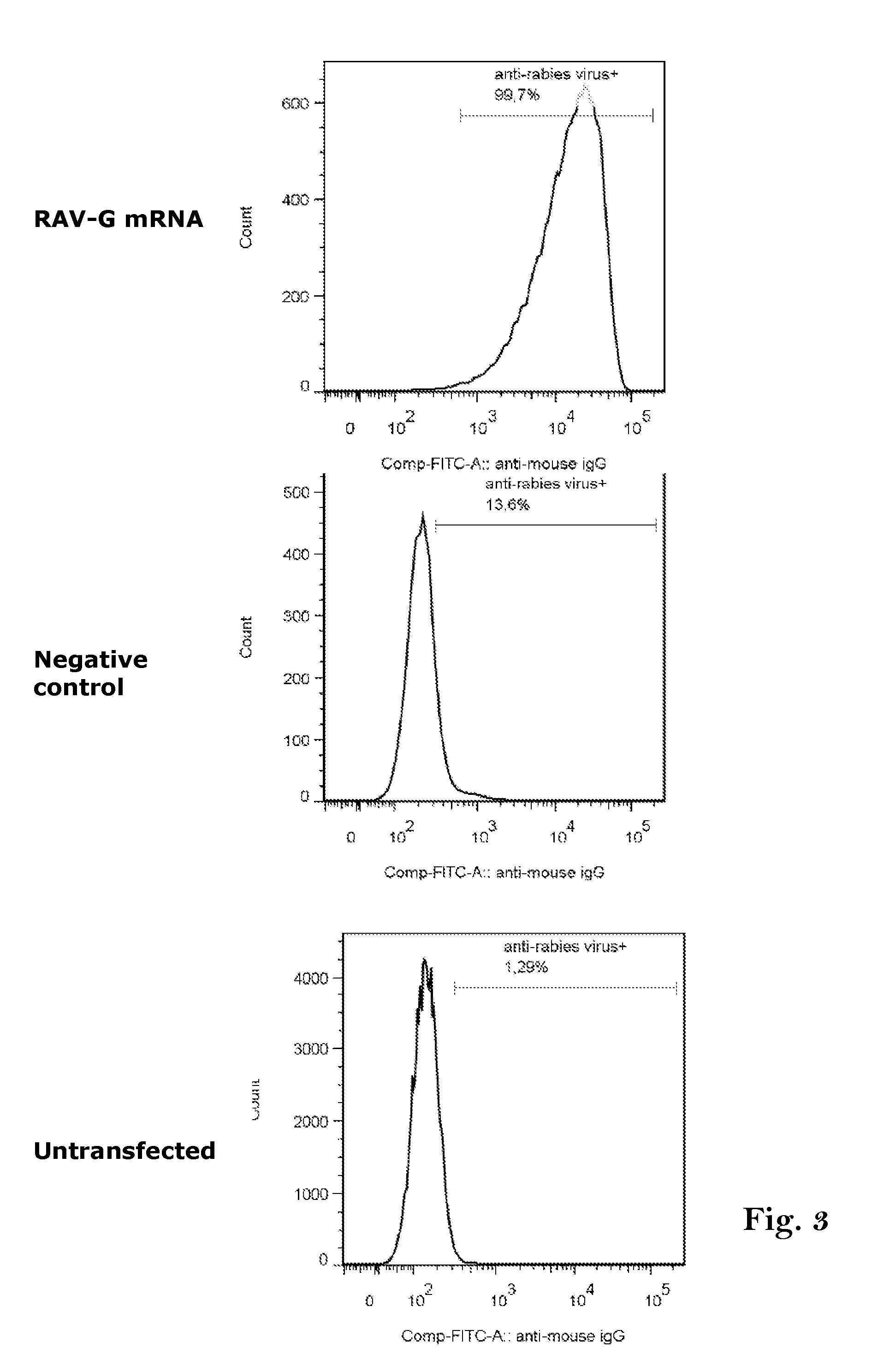Rabies vaccine
a vaccine and antibody technology, applied in the field of mrna sequence, can solve the problems of unreliable efficacy, time-consuming and resource-intensive cell culture production methods, and the need for multiple injections
- Summary
- Abstract
- Description
- Claims
- Application Information
AI Technical Summary
Benefits of technology
Problems solved by technology
Method used
Image
Examples
example 1
Preparation of the Rabies mRNA Vaccine
[0317]1. Preparation of DNA and mRNA Constructs[0318]For the present examples DNA sequences, encoding glycoprotein G (RAV-G) of the Pasteur vaccine strain were prepared and used for subsequent in vitro transcription. The corresponding mRNA sequences RAV-G(GC)-muag-A64-C30-histoneSL (R2403) and 32L-RAV-G(GC)-albumin7-A64-C30-histoneSL (R2507) are shown in FIGS. 1 and 2 according to SEQ. ID No. 24 and 25.
2. In Vitro Transcription
[0319]The respective DNA plasmids prepared according to paragraph 1 were transcribed in vitro using T7 polymerase in the presence of a CAP analogue (m7GpppG). Subsequently the mRNA was purified using PureMessenger® (CureVac, Tubingen, Germany; WO 2008 / 077592A1).[0320]The mRNA sequence RAV-G(GC)-muag-A64-C30-histoneSL (R2403; SEQ ID NO:24) comprises in 5′- to 3′-direction:[0321]a.) a 5′-CAP structure consisting of m7GpppN;[0322]b.) a G / C maximized coding region encoding the full-length protein of RAV-G of the Pasteur vaccin...
example 2
In Vitro Characterization of mRNA Encoding Rabies Virus G Protein (RAV-G)
[0338]HeLa cells were seeded in a 6-well plate at a density of 300 000 cells / well in cell culture medium (RPMI, 10% FCS, 1% L-Glutamine, 1% Pen / Strep) 24 h prior to transfection. HeLa cells were transfected with 5 μg of RAV-G encoding mRNA (R2403) or influenza HA protein of A / Netherlands / 602 / 2009 encoding mRNA (R2429) as negative control using Lipofectamine 2000 (Invitrogen) and stained 24 hours post transfection with a rabies virus specific antibody (HyTest Ltd; #11 / 06-R7-05) and FITC labelled goat anti-mouse IgG antibody (Invitrogen, #871942A) and analysed by flow cytometry (FACS). The flow cytometry data are evaluated quantitatively by FlowJo software.
[0339]FIG. 3 demonstrates that the RAV-G protein is, as expected for the Rabies G protein, expressed on the surface of transfected cells and can be recognized by an anti-rabies antibody.
example 3
Induction of a Humoral Immune Response by the RAV-G mRNA Vaccine
Immunization
[0340]On day zero, BALB / c mice were intradermally (i.d.) injected with the mRNA vaccine comprising mRNA coding for Rabies virus glycoprotein G (RAV-G) (R2403 according to Example 1; 80 μg / mouse / vaccination day) or Ringer-lactate (RiLa) as buffer control. Two control groups were intramuscularly (i.m.) injected with 1 / 10 of the human dose of the licensed vaccines Rabipur® (Novartis) and HDC (human diploid cell vaccine, Sanofi Pasteur MSD GmbH), respectively. All animals received boost injections on day 21 and blood samples were collected on day 35 for the determination of virus neutralization titers.
[0341]To establish a long term kinetic of the anti-RAV-G immune response, blood samples were taken from group 1 after 15, 29, 38 and 48 weeks and virus neutralization titers were determined.
TABLE 1Animal groupsStrainNumberRouteVaccineVaccinationGroupsexof micevolumedoseschedule1BALB / c8i.d.R2403d0: prime, d21: boost...
PUM
| Property | Measurement | Unit |
|---|---|---|
| temperature | aaaaa | aaaaa |
| weight ratio | aaaaa | aaaaa |
| full-length | aaaaa | aaaaa |
Abstract
Description
Claims
Application Information
 Login to View More
Login to View More - R&D
- Intellectual Property
- Life Sciences
- Materials
- Tech Scout
- Unparalleled Data Quality
- Higher Quality Content
- 60% Fewer Hallucinations
Browse by: Latest US Patents, China's latest patents, Technical Efficacy Thesaurus, Application Domain, Technology Topic, Popular Technical Reports.
© 2025 PatSnap. All rights reserved.Legal|Privacy policy|Modern Slavery Act Transparency Statement|Sitemap|About US| Contact US: help@patsnap.com



